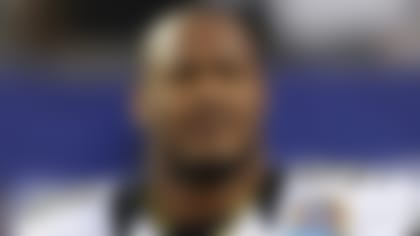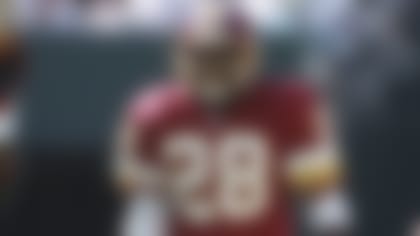We've reached the championship round, and so far explosive offensive attacks have garnered most of the headlines.
The Minnesota Vikings, New Orleans Saints and Indianapolis Colts have been lauded for their stellar passing games, while the New York Jets have been equally praised for relying on an old school offensive formula to make a deep playoff run.
While some continue to debate the merits of each of these units, I stand with the forefathers of the game when I declare that the defenses of these respective squads will determine which teams advance to the Super Bowl.
With that thought in mind, let's take a look at each of the defenses remaining in the playoffs and the obstacles they will face Sunday.
New York Jets
The creation of "Revis Island" has overshadowed the outstanding performance of the defense as a whole. The Jets entered the postseason ranked No. 1 in total defense and scoring defense (14.8 points per game), and their ability to suffocate passing games (finished as the No. 1 pass defense) has rightfully enhanced the profile of Darrelle Revis.
However, making the unit out to be one-man show would diminish the exceptional job that coach Rex Ryan has done in remaking the defense. Led by an influx of former Ravens (Bart Scott, Jim Leonhard and Marques Douglas), the Jets have taken quickly to Ryan's exotic schemes, and they've befuddled opposing quarterbacks with their varied pressure packages.
Ryan, who is the son of "46" architect Buddy Ryan, uses a variety of personnel groupings and formations to mask his pressure intentions. Additionally, he mixes in some unique coverage concepts to neutralize the effectiveness of sight adjustments (receivers adjust their routes based on which linebackers or defensive backs rush the quarterback) used to counter the blitz.
With the complexity of the scheme capable of creating doubt in the minds of astute play callers, it is not surprising that the tactic has disrupted some of the game's top quarterbacks. Peyton Manning, Tom Brady and Drew Brees struggled mightily against the Jets, and that trend has continued in the postseason, as Carson Palmer and Philip Rivers played well below their standards against New York.
Rivers, in particular, never appeared to get a good feel for the pressure or coverage, and his two pivotal interceptions were the result.
Given Indianapolis' one-dimensional approach on offense, Ryan will surely break out a host of complex looks that will test the mental acumen of Manning. How well the 10-time Pro Bowler responds to the unusual scheme will determine which team advances.
Indianapolis Colts
The defense often rests in the shadows of Manning and Co., but their quiet emergence as one of the league's top units keyed the team's run at perfection.
The defense sparked the team to seven victories by eight points or fewer, and their ability to hold the score down allowed the Colts to win with an offense that isn't as explosive as previous versions.
The unit's ascension to the ranks of the elite comes despite a change at play-caller this season. Coordinator Larry Coyer replaced Ron Meeks during the offseason, and he retooled the team's playbook to feature a wider variety of coverages. Though Coyer retained the team's vaunted Tampa-2 scheme as his base system, the Colts routinely mix eight-man fronts and man coverage into their game plan. This more aggressive approach resulted in the Colts ranking tied for eighth in scoring defense (19.2 points per game), and they allowed the fewest plays over 20 yards.
The feat is even more impressive when considering the Colts spent the majority of the season with a pair of rookies (Jacob Lacey and Jerraud Powers) playing extensively in the secondary. Though the team's ferocious pass rush has helped buffer the young secondary, the back end has played exceptionally well on its own merit.
In addition, the team has gotten solid play from its front seven. While most consider the Colts an undersized bunch, their speed and quickness makes it nearly impossible for opposing runners to turn the corner. However, the Jets' powerful rush attack presents a significant challenge due to their penchant for running between the tackles. The best way to attack a smallish defense is to attack it up the middle, and the Jets excel at an assortment of power runs off zone action. With LG Alan Faneca, C Nick Mangold and RG Brandon Moore specializing in creating movement off the ball, the Colts face a stern test.
The Colts responded well against a similar test while facing the Ravens last week, as they only allowed 87 yards rushing. Given the overwhelming success that the Jets enjoyed on the ground in their first matchup (202 yards) against a mixture of starters and reserves, the onus falls squarely on the Colts' defense to meet the challenge in the rematch.
Minnesota Vikings
Led by their dominating front four, the Vikings completely demolished Dallas, as they recorded six sacks and forced three turnovers. This act of supremacy typifies a pass rush that led the NFL in sacks (48), and keyed the league's sixth-ranked defense.
Jared Allen and Kevin Williams earned Pro Bowl invitations after tallying 14.5 and 6.0 sacks, respectively, and Ray Edwards (8.5) joined them in forming an imposing unit. Given their exceptional production, it is not surprising that coordinator Leslie Frazier relies extensively on his frontline to create pressure on the passer. This luxury allows the Vikings to play a hefty amount of Tampa-2 in most situations, and alleviates the pressure on the team's inconsistent secondary.
Although Frazier still occasionally mixes in an assortment of five-man zone dogs, the loss of LB E.J. Henderson forced the Vikings to scale back their pressure package. The reluctance to bring the blitz allowed opposing quarterbacks to attack down the field, and the team's struggles defensively down the stretch could be attributed to the lack of pressure.
The Vikings appeared to regain their pass rush prowess against the Cowboys and a similar effort will be needed against the Saints. Drew Brees is one of the league's best rhythm throwers, and the Vikings must disrupt his timing to keep him from methodically picking apart their secondary.
Although getting after the passer remains the priority in defending the Saints, the Vikings must be aware of New Orleans' potent running game. Pierre Thomas, Reggie Bush and Mike Bell powered the league's sixth-ranked rushing attack, and their ability to chew up yardage could set up Brees for a big day off play-action. Therefore, the Vikings' ability to win early downs will be paramount to their success.
New Orleans Saints
The opportunistic unit produced 39 takeaways and routinely pummeled quarterbacks under new play-caller Gregg Williams.
The veteran coordinator implemented a high-pressure scheme and the results were outstanding during the first half of the season. Led by Darren Sharper, the Saints scored seven touchdowns on defensive returns. Additionally, the Saints amassed 35 sacks and held opposing quarterbacks to a dismal 68.6 passer rating, which ranked third in the league.
While the Saints' penchant for creating negative plays fueled the team's 13-game winning streak, the big-play nature of the defense diminished when injuries ravaged the unit. The loss of CBs Tracy Porter and Jabari Greer impacted the team's ability to cover the pass, and the absence of DT Sedrick Ellis created openings against the run.
Given the host of injuries, Williams was forced to dial back some of his exotic pressures, and the Saints struggled. The team's three-game slide to finish the season coincided with the defense allowing two 100-yard rushers. Though some of the yardage could be attributed to the team resting players for the postseason, it's concerning when faced with the prospect of defending Adrian Peterson.
While Peterson has failed to surpass the 100-yard mark in eight consecutive games, including the playoffs, he is still one of the most feared runners in the game and is capable of going off at anytime. With the potential for Peterson to explode, the pressure is on the Saints' front seven to come up with a big effort.
In terms of the Saints' pass defense, the return of Porter and Greer got the unit back on track. After allowing 11 passes of 40 yards or more during the regular season, the Saints only surrendered two passes of 20 yards or more against the Cardinals last week, and kept Kurt Warner from generating the big play. That kind of coverage will be essential against a Vikings offense that rode the momentum generated from two Brett Favre bombs to Sidney Rice in their win over the Cowboys.
Given the explosive balance of the Vikings' offense, the Saints must step up defensively to advance to the Super Bowl.





